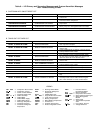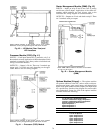
Table 9 — LID Primary and Secondary Messages and Custom Alarm/Alert Messages
with Troubleshooting Guides (cont)
L. CHILLER ALERTS
PRIMARY MESSAGE SECONDARY MESSAGE ALARM MESSAGE/PRIMARY CAUSE ADDITIONAL CAUSE/REMEDY
RECYCLE ALERT HIGH AMPS AT SHUTDOWN
High Amps at Recycle: Check guide vane
drive.
Check that guide vanes are closing.
Check motor amps correction cali-
bration is correct. Check actuator for
proper operation.
SENSOR FAULT ALERT
LEAVING COND WATER
TEMP
Sensor Fault: Check leaving condenser
water sensor.
Check sensor. See sensor test
procedure.
SENSOR FAULT ALERT
ENTERING COND WATER
TEMP
Sensor Fault: Check entering condenser
water sensor.
LOW OIL PRESSURE
ALERT
CHECK OIL FILTER Low Oil Pressure Alert: Check oil
Check oil filter. Check for improper
oil level or temperature.
AUTORESTART PENDING POWER LOSS V P Power Loss: Check voltage supply.
Check power supply if there are ex-
cessive compressor starts occurring.
AUTORESTART PENDING LOW LINE VOLTAGE
V P [VALUE]* exceeded limit of
[LIMIT].* Check voltage supply.
AUTORESTART PENDING HIGH LINE VOLTAGE
V P [VALUE]* exceeded limit of
[LIMIT].* Check voltage supply.
SENSOR ALERT HIGH DISCHARGE TEMP
CMPD [VALUE]* exceeded limit of
[LIMIT].* Check discharge temperature.
Discharge temperature exceeded
the alert threshold. Check entering
condenser water temperature.
SENSOR ALERT
HIGH BEARING
TEMPERATURE
MTRB [VALUE]* exceeded limit of
[LIMIT]*. Check thrust bearing
temperature.
Thrust bearing temperature ex-
ceeded the alert threshold. Check
for closed valves, improper oil level
or temperatures.
CONDENSER PRESSURE
ALERT
PUMP RELAY ENERGIZED
CRP High Condenser Pressure
[LIMIT]*. Pump energized to reduce
pressure.
Check ambient conditions. Check
condenser pressure for accuracy.
RECYCLE ALERT
EXCESSIVE RECYCLE
STARTS
Excessive recycle starts.
The chiller load is too small to keep
the chiller on line and there have
been more than 5 restarts in 4
hours. Increase chiller load, adjust
hot gas bypass, increase RECYCLE
RESTART DELTA T.
*[LIMIT] is shown on the LID as the temperature, pressure, voltage, etc., set point predefined or selected by the operator as an override, alert, or
alarm condition. [VALUE] is the actual temperature, pressure, voltage, etc., at which the control tripped.
M. SPARE SENSOR ALERT MESSAGES
PRIMARY MESSAGE SECONDARY MESSAGE ALARM MESSAGE/PRIMARY CAUSE ADDITIONAL CAUSE/REMEDY
SPARE SENSOR ALERT COMMON CHWS SENSOR
Sensor Fault:
Check common CHWS sensor.
Check alert temperature set points
on Equipment Service, SERVICE2
LID table. Check sensor for accu-
racy if reading is not accurate.
SPARE SENSOR ALERT COMMON CHWR SENSOR
Sensor Fault:
Check common CHWR sensor.
SPARE SENSOR ALERT REMOTE RESET SENSOR
Sensor Fault:
Check remote reset temperature sensor.
SPARE SENSOR ALERT TEMP SENSOR — SPARE 1
Sensor Fault:
Check temperature sensor — Spare 1.
SPARE SENSOR ALERT TEMP SENSOR — SPARE 2
Sensor Fault:
Check temperature sensor — Spare 2.
SPARE SENSOR ALERT TEMP SENSOR — SPARE 3
Sensor Fault:
Check temperature sensor — Spare 3.
SPARE SENSOR ALERT TEMP SENSOR — SPARE 4
Sensor Fault:
Check temperature sensor — Spare 4.
SPARE SENSOR ALERT TEMP SENSOR — SPARE 5
Sensor Fault:
Check temperature sensor — Spare 5.
SPARE SENSOR ALERT TEMP SENSOR — SPARE 6
Sensor Fault:
Check temperature sensor — Spare 6.
SPARE SENSOR ALERT TEMP SENSOR — SPARE 7
Sensor Fault:
Check temperature sensor — Spare 7.
SPARE SENSOR ALERT TEMP SENSOR — SPARE 8
Sensor Fault:
Check temperature sensor — Spare 8.
SPARE SENSOR ALERT TEMP SENSOR — SPARE 9
Sensor Fault:
Check temperature sensor — Spare 9.
NOTE: See Legend on page 68.
74


















